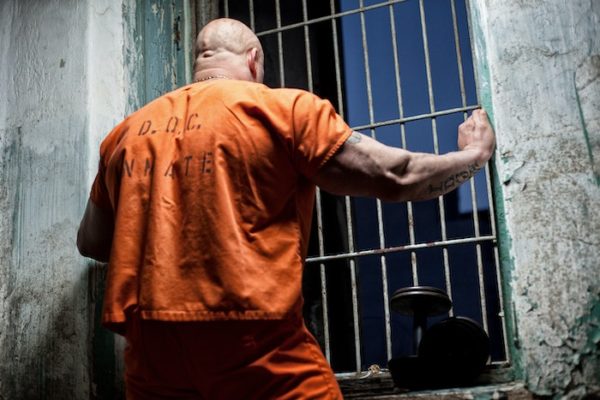
The death penalty has always come with controversy, but the topic is once again in the spotlight. In fact, the federal government just carried out its first execution since 2003. Plus, two more executions will occur later this week.
Daniel Lewis Lee received the death penalty early Tuesday morning via lethal injection. During Lee’s trial in 1999, the jury found him guilty of murdering three victims, including an 8-year-old child. In addition, Lee also robbed his victims in order to fund a white supremacist cause. He committed the crimes alongside Chevie Kehoe. However, Kehoe received a lesser sentence of life in prison.
While many people are glad to see justice served, others still adamantly oppose the death sentence, including the relatives of Lee’s victims. The relatives fought for Lee to receive a life sentence just like Kehoe. What’s more, they couldn’t even attend his execution in person due to health risks caused by COVID-19.
Obviously most courts only give out the death penalty to the most serious of offenses.
In fact, proponents of the death penalty argue that if someone takes a life, they should pay with their own life. I’ve even heard people say that they would rather the worst criminals be put to death out of fears that they could one day get another chance to wreak havoc on normal society.
That said, the death penalty often causes confusion instead of the justice it should serve. Throughout history, many people who received the death penalty ended up innocent, and the same mistake could always happen again. Since 1973, more than 165 people sentenced to death later ended up exonerated of all crimes after new evidence came to light.
Unfortunately for some, this evidence came to light after their execution.
Although Lee’s conviction came from a jury who believed he committed all of his crimes beyond a reasonable doubt, his last words included, “You’re killing an innocent man.”
Although no one brought new evidence to light or exonerated Lee, studies show that at least 4% of death row inmates are actually innocent.
Unfortunately, there’s no sure way to tell which prisoners are lying and which prisoners are desperately telling the truth.
Although Lee was a 47 year old white man, there is often a racial disparity in the convicts who receive the death penalty. Research shows that 52% of people who ended up wrongly placed on death row had black skin. Another study shows that black people are 7 times more likely to end up wrongfully convicted of murder than white people. Before someone is put to death, we need to verify that someone received a conviction because the evidence proves they committed the crime, not their skin color.
Further, in debates about using the death penalty people say that they don’t want their tax dollars to go to the long term care of criminals with life sentences. In actuality, the cost of carrying out executions is more expensive than life sentences without parole. Studies of the death penalty system in California show that the cost of carrying out a death sentence costs at least 18 times as much as a sentence of life without parole. Knowing this information, would it be better to let prisoners spend the rest of their lives rotting away in prison, living with the guilt of what they did? In some ways, life in prison could be an even worse punishment than death.
Whether you are for or against the death penalty, it will be interesting to watch the news this week in the wake of Lee’s death and as more federal executions are expected to take place. It’s time for new conversations to begin to explore potential problems with Capital Punishment, as well as seek justice for the victims of the most heinous crimes. Even when dealing with the death penalty, there is room to foster positive change.
Photo by Damir Spanic on Unsplash


















